Customer development ain’t cheap
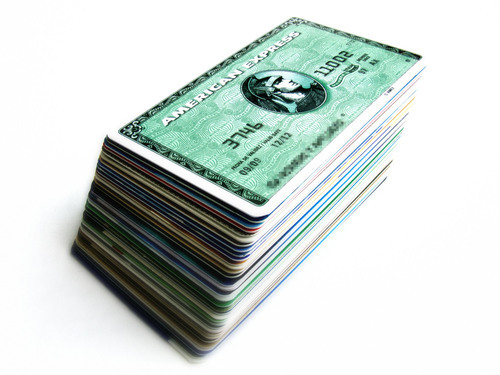
New bootstrapped startup?
Building a new app?
Ready your credit card.
Back of the envelope costs
- Surveys to your target market $1000
- Starbucks focus groups and usability tests: $200
- Buy 1000 quality users to your new app $2000
- x 5 rounds of product iteration = $16,000
Based on
- $1 per response x 5 questions x 200 qualified respondents
- $20 coupons x 10 people (random & Craigslist arranged)
- $2 targeted CPI x 1000 users
Conclusions
- If you’re running lean, early on it’s probably your biggest cost
- Good news: still cheaper than months of wasted design & dev effort
Footnote
- Chances are you’ll need multiple iterations (maybe it’s just me)
- Figures excludes dev, launch marketing, hosting, pizza etc.
- Asking friends for feedback is cheap, but biased
- You’ll 1000s of users to test LTV in a freemium product
Question - is there a cheaper way?
What’s your take? or let me know on
8 startup lessons on working with big brands
Note - this was a guest for TechInAsia, a great site for APAC startups.

If you’re doing a startup, there’s allure to a big brand partnership.
You might think: close a deal in a couple months and then prestige, validation, press, growth, new opportunities etc…
“If I get this deal we’ll be up in the bright lights!!”
Except it doesn’t usually work that way.
The reality is more like:
- getting a foot in the door is hard
- getting to a signed contract is grindingly tough
- getting a successful partnership that delivers real mutual value is the real challenge
- doing this all without getting sidetracked and “accidentally” burning your precious runway… hmmm
Our success and failure
My startup has worked with a few large brands in the past year. One failed draining precious cycles. A couple though turned much better, including a successful collaboration with media giant on new game , launched after months of hard work.
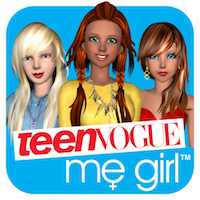
Here are some 8 startup lessons learned:
Lesson #1 - Press is overrated.
If your main goal is “buzz” that will lead to more downloads / users / revenue for your startup, brace for disappointment.

Even a mention in major media such as Tech Crunch translates to only a temporary spike (we’ve seen this). A friend got a top tier celeb to promote his new startup, resulting in far less returning users than he hoped.
We all remember glitzy press launches for projects that end up failing a year later. And those that rose to success without PR. Our new game got only a of editorial pieces but has still grown well despite it.
Whilst press can help for other reasons (eg- fundraising), a partnership is a pretty risky and resource grabbing way to try and achieve those goals.
Press is icing on the cake, rather than the cake itself.
Think about press as a great bonus only - if you don’t get it, no worries, a solid project will still thrive without it.
Lesson #2 - Is your opportunity cost acceptable?

Doing any project with a Fortune 500 company is going to take more time than you expected. Much more time.
Our project took nearly 6 months to deliver, and that’s fast.
Big brands need multiple approvals with different stakeholders, reviews with marketing and legal, endless back and forwards on product etc
If you’re a small startup and think you can create a brand new app for a brand whilst maintaining momentum on your “main” business, think again.
You’ll need to either hire up, rework what you already have, or try to turn your tech into a platform…or accept that THIS is your startup, and that your prior project will have to wait, perhaps forever.
Our project that failed in the end turned out as a good thing for us -whilst famous and adored brand to be associated with, it was turning into a large departure from our existing path (high opportunity cost) without enough strategic benefit.
Lesson #3 - Work with the right advocates

In a big company, it can be easy to find groups who may be interested and engage you in promising discussions that end up stalling.
Before committing lots of time with a group, some good questions to ask:
- What is the group’s mandate and business goals?
- Do they have budget?
- Do they have buy in from the relevant business units?
- Have they executed a similar project?
- Who signs off on a potential project?
- Do they have resources to commit to the project?
- Etc
In our case, we found an innovation products group who had a track record of projects and getting buy in from the different Conde Nast brands, and brands willing to embrace a new project - which got it all started.
Lesson #4 - Define your scope up front

Whilst in lean startup land we work iteratively and adapt, doing this with a brand that changes scope every week is a recipe for chaos at the least.
Small innocent requests - “oh can we add a module to let the customer redeem coupons through the website as well as the app?” can snowball.
Though there are pros and cons, I think it’s better to agree a list of deliverables and put it in writing early.
But how do you get it “right” from the start?
A good way is to either adapt from something that is proven to work (we based the new game on a mechanic from our first game) or do the upfront customer development and planning work to make sure it has as high chance as possible at success.
It’s a tricky one.
Lesson #5 - Harness the supertanker.

Big companies have processes, legacy and move slowly.
Startups are lightweight speedboats, deciding and moving quickly.
So what gives?
The natural instinct may be to try and bend the big company to your way and pace of working. This will lead most likely to frustration. Yours.
Instead, adapt to their way of working and get the big supertanker pointed in the right direction and let it power through.
For example all our normal task planning is through Google Docs. On the other hand, our partner did planning through Excel spreadsheets and a project management system. After a while, we just ran with it, and made sure that ALL the things to make the project succesful were included.
Once they were “locked in” the system, they just got carried through their usual process and happenes. If you focus less on the “how” and more on the “what” you can make the big company ultimately work for you.
Lesson #6 - Get the term sheet in place early

Legal contracts are one of the least enjoyable things a startup CEO has to deal with (after emptying trash and 4am server down emergencies).
Crawling through pages of minutia to spot potentially lethal gotchas doesn’t help you make your app even better.
And you may, like me, suck at it!
I’ve found a couple of ways to lessen the pain:
- First, get to a simple term sheet with the key points agreed up front, that can be signed off and act as the letter of intent. This should be no more than a few pages written in plain English. Once you have this in place, you can commit and focus on the project, and in parallel take your time with the legals.
- Get experienced mentors to help review the deal and legals. In my case with Frenzoo, I’m lucky to have a few angel investors who have plenty of experience in contracts, and act as sounding boards and sanity checks. It also helps to have a lawyer or two on your investor or advisor team (pro-tip, thats a HUGE advantage for an early stage startup)
Lesson #7 - Secure a budget.
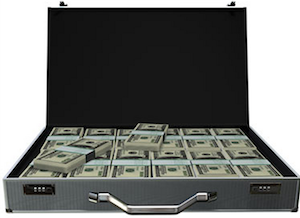
Startups think burnrate, but big companies think budgets and headcount.
Are they going to contribute marketing to the project? Then what budget will be spent, by whom and where?
Are they going to be doing part of the work on the project? Then who is allocated and for what percent of their time?
Ensure your project has resources allocated and if not, ask nicely for it. If they are not sure, then request a good number and discuss from there.
Having these in place rather than a “best effort” will increase the chance of making it a success.
Lesson #8 - Does your head and heart align?
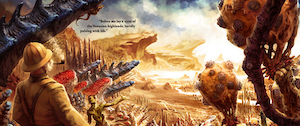
Back when we were still doing virtual worlds, we did a collaboration with Weta. As a big fan of Lord of the Rings & King Kong etc I loved this deal!
We would collaborate on a contest to promote their steampunk sci fi brand. The problem? Our audience, mainly women, weren’t into that genre. Despite it being well executed, it didn’t either make our service more sticky nor drum up more buzz for their brand.
The lesson? At the end of the day, only go ahead with a partnership if it really makes sense at both emotional and business level.
If head and heart line up, chances are it’s worth to pursue. Good luck!
What’s been your experience? I’d love to hear: or
Death of a feature
Recently we bid farewell to a new feature…
It was a cute feature, one we liked. But at our morning metrics meet we made the grim call. When the daily Android build went out hours later, it was gone.

Sunsetting a feature - how to decide?
“Stella’s Assistant” was designed as a basic plant & harvest currency mechanic. Players would start a job from 5 minutes to a day, and get paid once done.
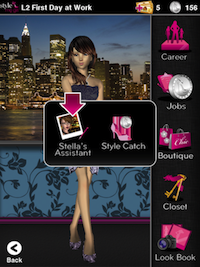

It was a small feature, an MVP hacked together on an assumption it would increase retention, helping remind players to return to collect their coins from Stella.
Other retention features we had launched performed well. Yet after launching it to our usual A/B test we found retention actually decreased in the group that had Stella’s Assistant, vs the control:
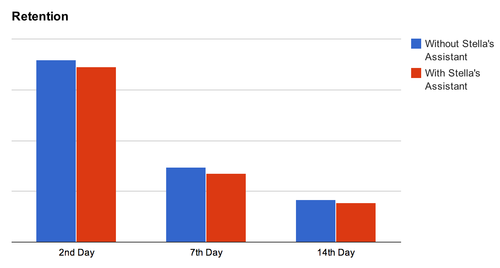
And to top it off, monetization also dipped:

We first verified the test was statistically significant. Next we thought it might have something to do with economy balance and tried with different payout values. Yet in no A/B test was the result positive.
Should I stay or should I go? Some tips to decide
When a feature under-performs like this, there’s a binary decision to make: iterate it or drop it.
How do you decide? Some questions to consider…
Is the feature meeting its stated goal?
It’s good to have a goal for each feature, preferably a specific number. eg- lift 7 day retention by 5%. Then when you release it you can see clearly whether it was successful.
In our case, the answer was no. The numbers don’t lie and for a feature designed to improve retention, to have it dip down, albeit slightly was pretty damning.
What is the underlying reason for its under-perfomance?
Often, numbers tell the what, but not the why.
In talking with players we found Stella’s Assistant just didn’t add much to the game. Whilst extra coins were nice, it felt like a weird farming sim feature tacked on to a fashion game. It also made the UI busier, and introduced an extra menu layer and more taps, pulling the overall experience down.
What is the opportunity cost of iterating?
As a startup, every developer hour counts, and the question is whether trying to improve the feature would have a bigger impact on metrics vs using that time to develop something else.
Apart from metrics impact, you have to weigh up the ongoing additional cost of testing and support.
In this case we weren’t convinced iterating it would move the needle much, and we had several other features that would have a much better “bang for buck”.
Does it have strategic value beyond metrics?
Some features may not improve the numbers, but may still have strategic value.
For example, a device registration system to stop cheating, an icon promoting a partner, or a parental safety feature that stops inadvertent payments in a kids game and builds long term trust.
In our case though, there just just wasn’t one.
Final tip - stay positive!

Abandoning something you have worked hard on, whether for a few hours or a few weeks is never fun. Us humans deal pretty badly when it comes to loss, including that at our own hands.
The key though is to stay positive, and realize you may have lost a feature but you gained a real learning - one that can only improve you and your startup going forward.
So, Stella’s Assistant rides the slow boat to Valinor and for us, the adventure continues :)
How do you decide when to kill a feature? I’d love your feedback. or .
Creating a game brand - 5 questions to ask
For a startup game company, does brand matter?
A while back I sought wisdom from a group of experienced tech entrepreneurs, all of whom had built successful companies:

That makes sense.
Why build a brand?
In an age of and cluttered app stores, having a strong brand for your portfolio is more important than ever.
Increased brand equity to increased customer lifetime values.
A strong brand will convert better in cross promotion and organic adoption of apps from the same company, offsetting rising CPAs to individual titles. A friend at a large mobile studio with many games, estimated the brand uplift factor to be over 20%.
And basic brand building doesn’t cost that much, making it startup friendly.
Yet why is branding is usually the last thing on our minds?
6 months ago I would have counted myself in the “product is the ONLY thing that matters” camp, yet now I’ve switched camps…

These may be great games, but would players know these are from the same company?

On the other hand, how could a player who enjoyed Tap Paradise Cove and loves cute animals NOT want to play Tap Pet Shop?
How to do it?
Ok, so it’s important, but for us engineers or designers, where to start?
Having gone through the process with , I found working through these 5 questions was very helpful:
- Who is the target player & market?
- What are your core brand attributes?
- What does your brand stand for? (emotional connection)
- What will identify your brand to players?
- What games and features strengthen the brand?
Let’s go through them one by one:
1. Who is the target player & market?
Yes, the easiest one! You’re making a game, you should have a primary audience in mind. eg-
- We’re making strategy games for high income males over the age of 25
- We’re making lifestyle games for adult women
- We’re making racing and sports games for boys up to the age of 14
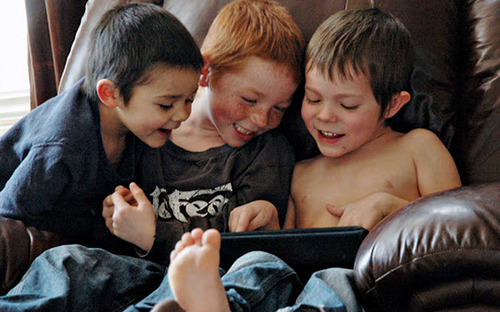
What if you believe you’re making the next Angry Birds, a game that will be popular with literally everyone?
Creating a game like this is difficult. While you might strike it lucky, your chances for success and monetization go up if you create games designed and branded for a target group of players. Even mega hits like Temple Run and Words with Friends have their primary markets (teens and adult women).
Defining player personas, who you’re building for, lets you really dig in and understand:
- Who are they?
- When do they play?
- What do they play on?
- What other media do they consume?
- What issues are important to them?
- What challenges do they have in their lives?
- etc
2. What are your core brand attributes?
If you had to pick (and you do!) what are the 2 or 3 things that are unique to your brand. Put another way, what makes you different from everyone else out there?
Let’s look at some examples from mainstream:

- Toms - style with a social conscience
- Nike - personal achievement
- Walmart - large selection and low prices

- Personal - games that relate to my life
- Playful - games that can laugh at themselves
- Inspirational - positive games that inspire me

Once you have gone through this and settled on your brand attributes, it’s like you’ve found your North Star. It will help guide you in decisions from here on out.
3. What does your brand stand for? (emotional connection)
The strongest brands form emotional connections with consumers that often override logic and reason.
Low cost rubber and fabric stitched in a factory in Indonesia can inspire people to “Just Do It”. People will queue for days for the latest iDevice. Overpriced headphones from Beats convey urban cool and freedom from authority:

It opened our eyes - when we A/B tested taglines for Me Girl, we found emotional phrases like our final choice “Fabulously Me” converted much better than impersonal choices like “Games with Style”.
“Fabulously Me” sums our mission: to make women feel fabulous while playing our games. Regardless of age, looks, body shape, status in life, challenges…everything.
This is what our brand stand for.
If a brand stands for something - Freedom. Challenging yourself etc., chances are players will care that much more in return.
4. What will identify your brand to players?
Once you’ve locked down your targets, brand attributes and emotional connection, it’s time to bring that to life visually.
Creating a match of logo, typography, color palette, audio, UI elements and animations in a cohesive experience that conveys your values is the goal. Honestly, it’s easier said than done (we have a ways to go) But we just consciously going through the process will often result in something good.
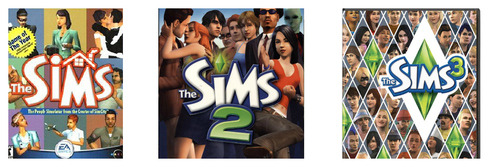
The venerable line and their “Play with Life” proposition does it extremely well, with consistent visual elements that a random 20-something on a street could identify in a second. And their music and audio right including their quirky Simlish reinforces a unique personality.
As we’ve seen with the Sims, branding elements that anticipate and can weave into future games, expansions and sequels is also important. Even more so in the age of mobile with more releases more often.
For us a future “Dance Me Girl” or “Me Girl Dancer” would fit nicely into the same family from a cross promotion perspective.

5. What games and features strengthen the brand?
Consistency is key - whether in art, storyline, mechanics, humour etc.
If decided to sell your personal info to shady direct marketers, how would you feel?

Likewise if you’re someone who enjoys Bubblez on and returned to find them pushing a hardcore dungeon raiding MMO, you’d probably be confused.
These are extreme examples of course, but there are plenty of choices that we all face every day:
- should I add a feature to simplify UI but reduce freedom in my simulation game?
- should the game be balanced to encourage free players or heavily favor paid users?
- what types of ads should I be showing in my freemium game?
- should I add a feature that lets you lose a lot of real money investment in PvP?
- what should my next game be?
- etc..
Knowing your brand values often helps in these questions - ringing an warning bell when you’re heading down a wrong path.
For example we could add competitive systems where you systematically tear down the reputation of others. Whilst “fun” from a game design perspective and helping short term numbers, it wouldn’t align with our “positive and inspirational” feel.
And on the flip side, carving out cycles to do brand building features that might not directly boost metrics but help players fall in love with your game brand can be worthwhile.
An ongoing endeavour
As we’re understanding, it’s not a one time activity - building a brand is an ongoing sustained effort that spans from game design, to engineering to marketing and even customer support.
Of course a great brand can’t rescue a bad game and it’s always a tough call to put precious cycles into something you haven’t before.
But assuming you are making good games, investing in brand building can add up to huge wins in the long term.
Any branding tips to share? I’d love to hear your feedback. or
Big thanks to our investor whose Mattel experience made us “see the light”!
Needle in the haystack

Think it’s hard finding engineers?
Try finding a for a startup that makes mobile games for women.
Your wishlist might look something like this…
- Someone who has deep games experience, but there are so few gaming companies that have done high quality mobile games for that audience.
- Someone who has a fashion industry background and a keen sense of trends and style - yet the worlds of fashion and gaming are proverbial ships in the night.
- Someone with a global perspective - knows the US audience yet is tuned in with innovation out of Asia (where our development team is based)
- Someone who can understand the vision for our brand (our ambition for that honestly scares me sometimes), and drive forward in unchartered waters
- Someone who loves startup life - rewards and risks
Needle in the haystack enough?
After a couple months searching, we interviewed several talented artists, but few with the other elements. Great people for building out the team but not the lead creative role.
Always “so close, yet so far”.
Yet in the end we managed to find someone who brought all the pieces together.
Fashion design, deep love of games (everything from Star Wars Galaxies to Mall World). A third culture kid (fellow Eurasian!) who draws inspiration from the US, Europe and Asia.
The funny thing was, she turned out to be one of our original fans. On our web 3d world Frenzoo.com, she created a popular vfashion boutique under the Sheeana avatar name. She knew our project from the start, and kept up we pivoted from web to mobile.
We ultimately found the candidate with the best experience and passion for our project was one of our players.
Learning: occasionally the best talent is right in front of you, if you only look
Have you had success hiring one of your players? or
Casual Connect Talk - 1M downloads in a month for Indies
Video from my at Casual Connect last month is now up:
1 Million Downloads in a Month – How Indies Can Make It Happen
Always trying to learn more - what other tips would you have included?
Ping me on or .
ps - new blog posts coming this weekend :)
10 tips in the war for talent

For startups & game companies, it IS a war.
One fought with stock and salaries, massages and medical plans.
At an event in San Francisco last week, chat swung from banter to business when one of the group started an eager pitch to another, a talented game dev. The rest of us slunk away like friends leaving a flirting pair in privacy.

Back in Hong Kong it’s less crazy, but demand for quality talent still exceeds supply.
So how to compete?
Earlier we tried hiring an engineer position the time efficient (ahem…lazy) way - throwing up a vanilla job ad and waiting for CVs to roll in. We only received 8, none up to our standards.
Now with several to fill, fast, we resolved to do much more this time around.
Here are 10 tactics we used:
1. A fun referral program
We decided to slipstream off the recent Retina Macbook Pro launch by offering a new Retina iPad as thanks. It seemed to work, with several folks getting in touch and introducing their friends. We even had a random person coming to the office to drop a CV which was a first for us.

2. A personal email blast
To help spread the word, we pulled together a mass email to friends and connections we’d met. We started with a large list, filtering out those outside of Hong Kong (exporting from LinkedIn) and culling other game companies (no bad karma).

Whilst I couldn’t track open or click rates as I decided to use casual plaintext, the number of people who replied was over 15. So for a cost of around $5 it was a good investment.
3. Promote the jobs in-game

Having gained a nice global audience including Hong Kong, we decided to reach out . We have a dynamic welcome message that can be displayed on loading, and we coded it to display the referral program and contact email for those playing from Hong Kong. Sadly it was hard to tell the impact. In hindsight I should have put the call to action as a different address eg- to track the impact (note to self for next time).
4. Host and speak at events
One thing we’re doing more of in the last few months is having the team host and speak at more industry events (like held together with Unity3d at Cyberport). It’s good for the crew to hear from others and share our own learnings, and spread the word.
5. Targeted Facebook ads
Whilst the cost of posting a job on LinkedIn and Monster (not to mention a recruiter) would have been high, we found it more cost effective to do a targeted Facebook run. Of course the beauty of Facebook ads is the ability to hyper target based on location, demographics and interests. It’s something we’ve used a lot for different purposes in the past. Whilst the CTR is low as expected, having it in front of lots of relevant eyeballs helps in background brand building.

6. Give the company a face
A big draw for working at a startup is collaborating with a fun, smart team, unbound (hopefully!) from bureaucracy. A intro’d the awesome new folks joining the family and gave a sense of the vibe. This got good buzz out in the community…

7. Participate in Hackathons and Startup Contests
For programmers hands on events like hackjams and startups weekends are just a whole lot of fun and great chance to meet kindred spirits. Two of our team recently entered and won a Facebook hack day in Hong Kong. Working with an award winning team is one extra draw for potential recruits, and something we now highlight. How much does it help? Who knows but sure can’t hurt…

8. Get press
How to get press coverage? That’s another post which luckily my friends at Buffer have . You don’t need a million users to get that - it helps, but frankly not as much as an interesting story angle. Startups almost always have compelling tales and takes, so usually there is a pitch that can get coverage.
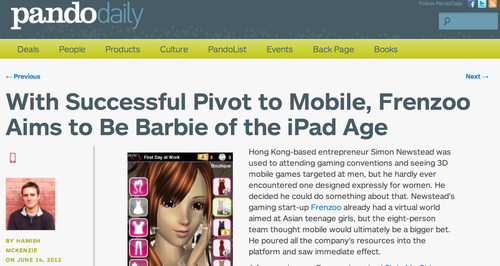
In our case we recently got coverage by several great . Doing PR costs less and only takes a few hours of creative thinking (more on that for another day)
9. Look at adjacent segments
If the need is niche and competition fierce, it may be better to look out to adjacent fields and skillsets. One of our shortlist game designer candidates ends up being someone from the fashion industry and she just loves playing all sort of social and mobile games. A reminder it always pays to…
10. …think outside the box!
Lately I’ve seen some great examples of startups thinking different in recruiting talent, from offering (expensive) through to (cheap).

You may not come up with something that makes the front page of Hacker News and a gazillion page views, but chances are just by making an attempt you’ll end up doing more than the other companies, which is half the battle.
And our result?
Going beyond the usual job ad generated more than 200% more candidates, at approximately 50% extra cost. Whilst it’s hard to isolate the impact of some of the tactics (mostly my bad!), all up it was worthwhile.
We’re able now to fill two of the three open positions. Still have to work hard to fill a final programmer position, but we’re in much better shape.
Lesson learned - when hiring, you usually get what you put in. Getting more creative and trying more things helped turn around our first failed attempt.
What tips do you have for hiring? me or
ps - for friends reading this in Hong Kong, and giving iPad’s for successful referrals… but you knew that already ;)
5 lessons from Greplin’s demise

When I first of Greplin via a flurry of news from elite tech blogs, I fell in love.
Finally, a way to search all my stuff - Gmail, Google Docs, even Facebook in one single search - brilliant! And they were by Sequoia, generally a good sign.
The first weeks I used the service a lot but over time, less and less.
Why?
I found I didn’t need to use it that often, and when I did, I didn’t.
The handful of times I remembered to use Greplin though it worked pretty well.
In most cases though local and a search in one of the web services did the job. And in the rarer cases that didn’t work by habit I would go through them one by one until I found what I was looking for.
So in the end, something I thought would be a hit turned out the opposite.
What startup lessons am I taking away from Greplin’s ?
- Be a painkiller, not a vitamin (eg dropbox)
- Make something that people are going to use often (eg evernote)
- Hype is different from traction (eg greplin vs whatsapp)
- Give people a trigger to return to the service (eg icons, notifications)
- Make something viral or at least monetizing well enough to buy traffic (eg mint)
Goodbye Greplin, and wishing the best…
What lessons would you draw from this? me or
A/B testing your icon (good, better, best)
Your app icon is like a shop front, on a very busy retail street.
Warm and welcoming*, interesting and attractive and you’ll encourage people to wander inside and check it out Drab or shabby (drabby!) and few will bother to look.
* I mean seriously, who could resist that cute a baby ?
It’s clearly something people think is worth investing in. A co-founder of a top game company told me it took them 3 months to come up with the icon for one of their monster RPGs. For our first game we tested over 64 different versions on the way to identifying a winning .
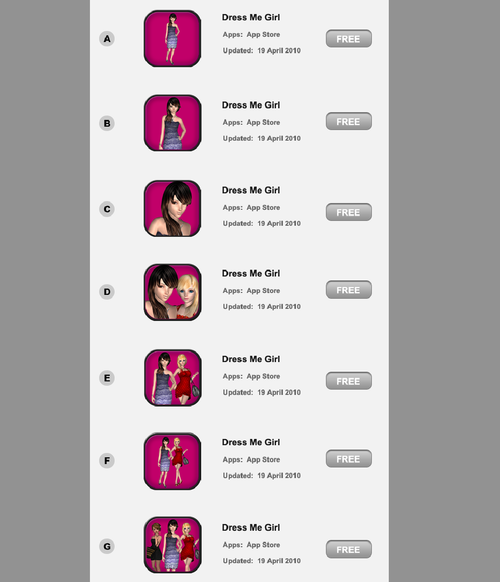
One of the many tests we did over the course of several weeks
So how do you actually conduct an effective a/b test to come up with a great icon?
There are several ways - here are a few approaches in order of increasing accuracy.
1/ Good
One easy way to run a very fast and cheap test is to use a service like . They do simple A vs B tests, typically as a front end to a crowdsource platform like Amazon Mechanical Turk, where the participants are asked which they prefer.
Pros:
- Cheap
- Very fast
- Ability to filter by demographic
Cons:
- Bias of tester self selection
- Subject to participant self awareness
- Lack of real intent and context
2/ Better
Next up you can use a platform like . This let’s you deploy multiple versions in parallel out in front of many eyeballs and measure click through percentages.
Pros:
- Fast
- Ability to target by interests, demographics
- Less bias
- Flexible sample sizes
Cons:
- Intent and context is closer but not same as real intent
- Can cost a lot depending on sample size to get statistical significance
3/ Best
The best way to test is to actually test with a real audience in the context they would discover your app once launched (ie ads and appstore charts). For iOS and Android this can mean ads on networks including AdMob, iAds, inMobi, Millenial Media etc You don’t want to use incentivized channels like offerwalls as they aren’t an accurate measure of actual self-generated user interest.
Beyond just clickthroughs, you can also measure true conversion to installs and app opening, by integrating the ad networks’ SDKs. Ie- do the players feel your game description and landing page reflects what they were interested in, which was the icon. (A whole another story on whether the game matches to what they expected when they installed)
What if you app isn’t already launched? Then you can setup a separate test account and run the ads to point there. Android is good that way. Also you can restrict the test app and campaign to certain geographies if you want to keep it fairly low key.
Pros:
- Truly unbiased and representative audience
- Accurate context
- Flexible sample sizes
- Measure actual conversion
Cons:
- Takes time to integrate SDKs, approve creatives and measure - cycles are longer
- Can cost a lot depending on sample size to get statistical significance
How do you come up with a great icon? Let me know by or
Choice is good, right? (re Destructoid)

Ah controversy :)
It stirs up emotions when it’s on a topic near the heart - like our debut game, lovingly crafted over several months.
Amid the positive articles on our Style Me Girl launch from , and others, one popped up by from a very different angle:
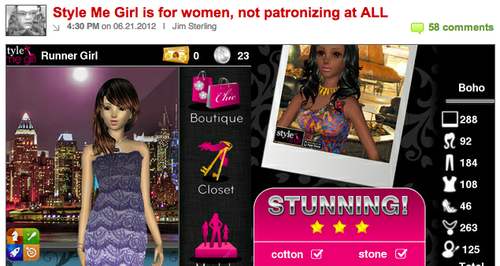
Jim’s view as I read it was that a fashion RPG designed for girls and women playing as a stylist was patronizing. His final paragraph:
Rejoice, GURL GAMARZ, no longer will you have to play Calling Duty or Grand Auto Grab with those smelly boys. Now there is a game that you little ladies can play while you’re shopping for shoes and thinking about kissing the high school leader of the footbasket team. Aren’t you lucky?
Well before responding, to be clear I have a lot of respect for Jim and his work. He’s among the best in the business and it’s refreshing to see someone call it as they see it. Not to mention it’s way more fun to read, which is why I count myself as one of many Destructoid fans.
That said I have to respectfully disagree and respond:
- The piece mentions that we’re described as the “first mobile RPG exclusively for women.” Rather, what we did say was that it was the first 3D fashion RPG game, because we feel our 3D technology is quite unique, and that it was among the relatively few RPG games for women. And yes, there are boys and guys who play as well which is just fine by us.
- We feel female gamers should be able to enjoy different types of games including ones made specifically for them. Our new designer Moona loves World of Warcraft as well as girl games like Fashion Story. Jasmine, our marketing manager plays Crime City and D3 as well as Top Girl. Shouldn’t there be Vogues and Cosmos to complement GQs and Newsweeks? Imho, the more choice the better. Hence Me Girl.
- Finally playing a game where you are an aspiring stylist, shopping and doing photo shoots is to us, a positive thing. Fashion is fun and creative! Games are fun and creative! Both have no age limits. Why not bring the two together?
And whilst there was plenty of debate in the comments, it’s good to see others in the Destructoid community who feel the same way:

Anyway long live freedom of opinion and choice. Now it’s back to work :)
